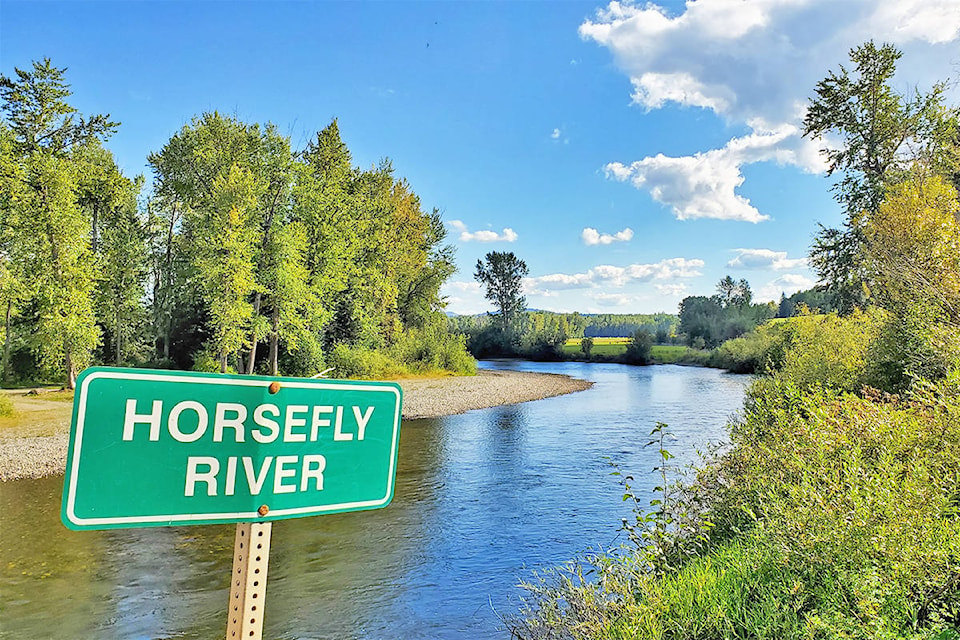Sockeye salmon are slowly beginning to show up in the Horsefly River, just in time for this weekend’s salmon festival.
Horsefly resident Helen Englund said she was told by a local fishing guide that he saw 20 to 30 salmon in the river on Tuesday.
“He also said the water was dirty due to the rain and the water level had risen about one foot,” Englund said. “We are all hoping and keeping our fingers crossed that there will be a huge influx of salmon coming soon not just here in the Horsefly River, but in all river systems.”
For two days — Saturday, Sept. 14 and Sunday, Sept. 15 from 10 a.m to 4 p.m. — the annual festival will see vendors, performances, art and photography displays, and Fisheries and Oceans staff doing fish dissections, as well as several other educational booths.
Read more: Horsefly River Salmon Festival ready to go Sept. 14 and 15
In advance of the festival, Englund did some research about salmon and discovered the earliest record of salmon in North America is of the sabre-tooth salmon in fossils dating up to seven million years ago.
“They were up to three metres long — these weren’t your common salmon.”
There are ten species of Pacific salmon. The seven that occur in B.C. include Sockeye, Chinook, Coho, Pink, Chum, Steelhead Trout, and Cutthroat Trout. Two more occur within North America, Mexican Golden Trout, and Gila Trout, and Masou (or Cherry) salmon occurs only in Asia. Plus, there are also freshwater forms of Sockeye (Kokanee salmon), Steelhead Trout (Rainbow Trout), and Masou Salmon.
Pink salmon are the smallest and most abundant species and Chinook salmon are the largest (exceeding 100 pounds) but least abundant species. Interestingly, they have exactly the same number of scales.
Pacific salmon undertake anadromous migrations meaning they reproduce in clean, cool, freshwater streams, but rear for a portion of their life in oceans, where they accumulate more than 99 per cent of their adult weight.
Once adult salmon return to freshwater, they do not eat. This means that adults can go for six months without food while transferring body fats into their gametes for reproduction.
news@wltribune.com
Like us on Facebook and follow us on Twitter
